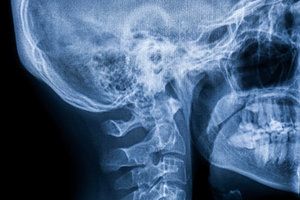New York's highest court of appeals has held that no-fault insurers cannot deny no-fault benefits where they unilaterally determine that a provider has committed misconduct based upon alleged fraudulent conduct. The Court held that this authority belongs solely to state regulators, specifically New York's Board of Regents, which oversees professional licensing and discipline. This follows a similar recent ruling in Florida reported in this publication.
The "Chiropractic Stroke": It Does Exist and We Must Do More to Prevent It
In the September 2019 issue, my colleague and fellow chiropractic expert witness, Dr. Richard Cole, wrote a well-referenced and provocative article concerning cervical manipulation, vertebral artery dissection, and vertebrobasilar stroke. I found the article so interesting I felt compelled to hitchhike on Dr. Cole's topic. Everyone reading this article should, without question, read Dr. Cole's article.
In the article, Dr. Cole uses a vignette to represent a collage of closed cases he reviewed as a malpractice expert. He concludes at the end of the vignette, "The chiropractor did everything any prudent DC would have done." I respectfully disagree.
I agree with Dr. Cole that research shows no causal relationship between cervical manipulation and cervical artery dissection or stroke in healthy patients. However, doctors of chiropractic are under a duty to perform a thorough history and physical examination, diagnose, refer, and not manipulate a pre-existing cervical artery dissection.
The Case in Question

Marty, a female patient, had not seen Dr. Tate for several months. Marty presented with neck pain and headache of idiopathic onset, present for several days, and not relieved by OTC NSAIDs. Dr. Tate performed a cursory history and examination. She diagnosed Marty as being "out of adjustment at C2" and assumed it was the "same problem as last time." Twenty seconds after cervical manipulation, Marty suffered a vertebrobasilar stroke. She was later diagnosed at the ER with vertebral artery dissection, and someone at the hospital told Marty her chiropractor tore the artery in her neck.
Dr. Tate did not do anything a prudent DC would have done. A reasonable and prudent DC would have done a thorough history taking and physical examination, suspected cervical artery dissection, provided no treatment, and referred Marty for CTA (computed tomography angiogram) and emergency medical care.
Dr. Cole is correct that "Marty obviously had a pre-existing spontaneous dissection of her neck artery, which caused her to have neck pain and headache. She went to see her chiropractor and during the manipulation, the thrombus embolized. Dr. Tate did not tear the artery." However, while Dr. Tate did not tear Marty's vertebral artery, she did breach the standard of care on two counts and is responsible for the occurrence of the vertebrobasilar stroke.
Failure to Diagnose & Refer
Dr. Tate breached the standard of care by failing to diagnose Marty with a pre-existing cervical artery dissection and refer for CTA and emergency medical care. Dr. Tate misdiagnosed Marty as "out of adjustment at C2." I can state with a high degree of certainty that but for Dr. Tate's failure to diagnose and refer, Marty could have received CTA and emergency medical care sooner, which could have avoided the vertebrobasilar artery stroke.
Because Marty had not been seen for several months, a thorough history and physical examination were indicated.1 This was not a "wellness" visit. Marty had a chief complaint. Dr. Tate failed to record blood pressure or pulse, failed to perform an orthopedic and neurological examination, and failed to perform a cranial nerve examination.
Had Dr. Tate referred Marty for CTA diagnosis and emergency medical care, Marty's chance of avoiding the vertebrobasilar stroke was almost 100 percent.3
Individuals with vertebral artery dissection appear to have relatively good outcomes when treated in routine clinical fashion.2 In a large, heterogeneous patient population presenting with cervical artery dissection in the absence of TIA or stroke, researchers found that approximately 1.7 percent developed a stroke in the first 12 weeks following the diagnosis of dissection. Put differently, 98.3 percent did not develop a stroke in the first 12 weeks following the diagnosis of dissection, and the number of patients who did develop a stroke after 12 weeks was statistically zero.3
Direct Causation
Dr. Cole is correct that cervical manipulation is not a risk factor for neck artery injury in a healthy patient. However, Marty was not a healthy patient, and did not have a normal, healthy vertebral artery. It is unlikely that the thrombus from the vertebral artery dissection, which had been present and stable for days, coincidentally embolized during cervical manipulation and caused a vertebrobasilar stroke 20 seconds later.
Dr. Tate breached the standard of care by performing cervical manipulation in the presence of a pre-existing vertebral artery dissection. I can state with a high degree of certainty that cervical manipulation exacerbated the pre-existing vertebral artery dissection and resulted in vertebrobasilar stroke.
What the Research Says
Vertebral artery dissection is not destined to evolve into vertebrobasilar artery stroke. Research shows that most vertebral artery dissections heal spontaneously, and in particular, extracranial vertebral artery dissections generally carry a good prognosis.4
While research does not support the opinion that cervical manipulation could result in vertebrobasilar stroke, the research applies to patients with a normal, healthy cervical artery. Researchers are careful to make this point: (Emphasis added)
- "Our data suggest that the mechan-ical strain produced by SM (spinal manipulation) seems to be innocuous to the joints and surrounding tissues in healthy subjects."5
- "There were no significant changes in blood flow or velocity in the vertebral arteries of healthy young male adults after various head positions and cervical spine manipulations."6
- "Therefore, we conclude that cervical spinal manipulations, as tested here, are safe from a mechanical point of view for normal, healthy VA (vertebral artery)."7
Research does support the opinion that cervical manipulation is contraindicated in the presence of pre-existing vertebral artery dissection8 and can cause a stroke in the presence of pre-existing vertebral artery dissection:
- "[The] current study does not exclude cervical manipulation as a possible cause or contributory factor in the occurrence of VBA (vertebrobasilar artery) stroke."9
- "Awareness of the non-specific symptoms of VAD (vertebral artery dissection) is important because SMT (spinal manipulative therapy) could exacerbate the condition and lead to complications such as stroke."10
- "Physical triggers, including SMT (spinal manipulative therapy), can serve as plausible final link between the underlying disease and stroke (for instance, in case of arterial dissection with existing connective tissue weakness)."11
- "We have not ruled out neck manipulation as a potential cause of some VBA (vertebrobasilar artery) strokes. ... It might also be possible that chiropractic manipulation, or even simple range-of-motion examination by any practitioner, could result in a thromboembolic event in a patient with a pre-existing vertebral artery dissection."12
- "No cause-and-effect relationship has been established between cervical spine manipulation and CAD (cervical artery dissection), but it seems that cervical manipulation may be capable of triggering dissection in a susceptible patient or contributing to the evolution of an already existing CAD."13
- "In some cases, neck pain is the only sign of a vertebral artery dissection, motivating a person to seek chiropractic treatment. In this case, cervical manipulation could trigger a dramatic brain stem stroke."14
- "[Cervical] pain that precedes and motivates chiropractic cervical manipulation may be the first symptom of a hitherto unrecognized spontaneous (or traumatic) dissection. In such a case, cervical manipulation would precipitate stroke by either worsening arterial damage, leading to positional occlusion of an already narrowed artery, or dislodging an intraluminal thrombus."15
Take-Home Message
Dr. Cole is correct to defend cervical manipulation from allegations of causing cervical artery dissection and resultant stroke in healthy individuals. However, as doctors of chiropractic, we must hold ourselves to the standard of care and our duty to diagnose, refer, and not manipulate a pre-existing cervical artery dissection.
References
- Chaibi, et al. A risk–benefit assessment strategy to exclude cervical artery dissection in spinal manual-therapy: a comprehensive review. Ann Med, 2019 Mar;51(2):118-12.
- Gottesman, et al. Clinical characteristic of symptomatic vertebral artery dissection. A systematic review. Neurologist, 2012 Sept;18(5):245-254.
- Morris, et al. Timing of incident stroke following cervical artery dissection presenting without ischemia. Stroke, 2017 March;48(3):551-555.
- Park, et al. Vertebral artery dissection: natural history, clinical feature and therapeutic considerations. J Korean Neurosurg Soc , 2008;44:109-115.
- Achalandabaso, et al. Tissue damage markers after a spinal manipulation in healthy subjects: a preliminary report of a randomized controlled trial. Disease Markers, 2014;2014:815379.
- Quesnele, et al. Changes in vertebral artery blood flow following various head positions and cervical spine manipulation. J Manipulative Physiol Ther, 2014 Jan;37(1):22-31.
- Herzog, et al. Vertebral artery strains during high-speed, low amplitude cervical spinal manipulation. J Electromyography and Kinesiol, 2012 Oct;22(5):740-746.
- Puentedura, et al. Safety of cervical spine manipulation: are adverse events preventable and manipulations being performed appropriately? A review of 13 case reports. J Manual and Manip Ther, 2012;20(2).
- Kosloff, et al. Chiropractic care and the risk of vertebrobasilar stroke: results of a case-control study in U.S. commercial and Medicare Advantage populations. Chiro & Manual Ther, 2015;23:19
- Mattox, et al. Recognition of spontaneous vertebral artery dissection preempting spinal manipulative therapy: a patient presenting with neck pain and headache for chiropractic care. J Chiro Med, 2014;13:90-95.
- Tuchin. Chiropractic and stroke: association or causation? Int J Clin Pract, 2013 Sep;67(9):825-833.
- Cassidy, et al. Risk of vertebrobasilar stroke and chiropractic care. Spine, 2008;33(34):S176-S183.
- Haneline, Croft, et al. Association of internal carotid artery dissection & chiropractic manipulation. The Neurologist, 2003;9:35-44.
- Rothwell, et al. Chiropractic manipulation and stroke: a population-based case-control study. Stroke, 2001 May;32(5):1054-60.
- Mas, et al. Dissecting aneurysm of the vertebral artery and cervical manipulation: a case report with autopsy. Neurology, 1989;39:512-515.



